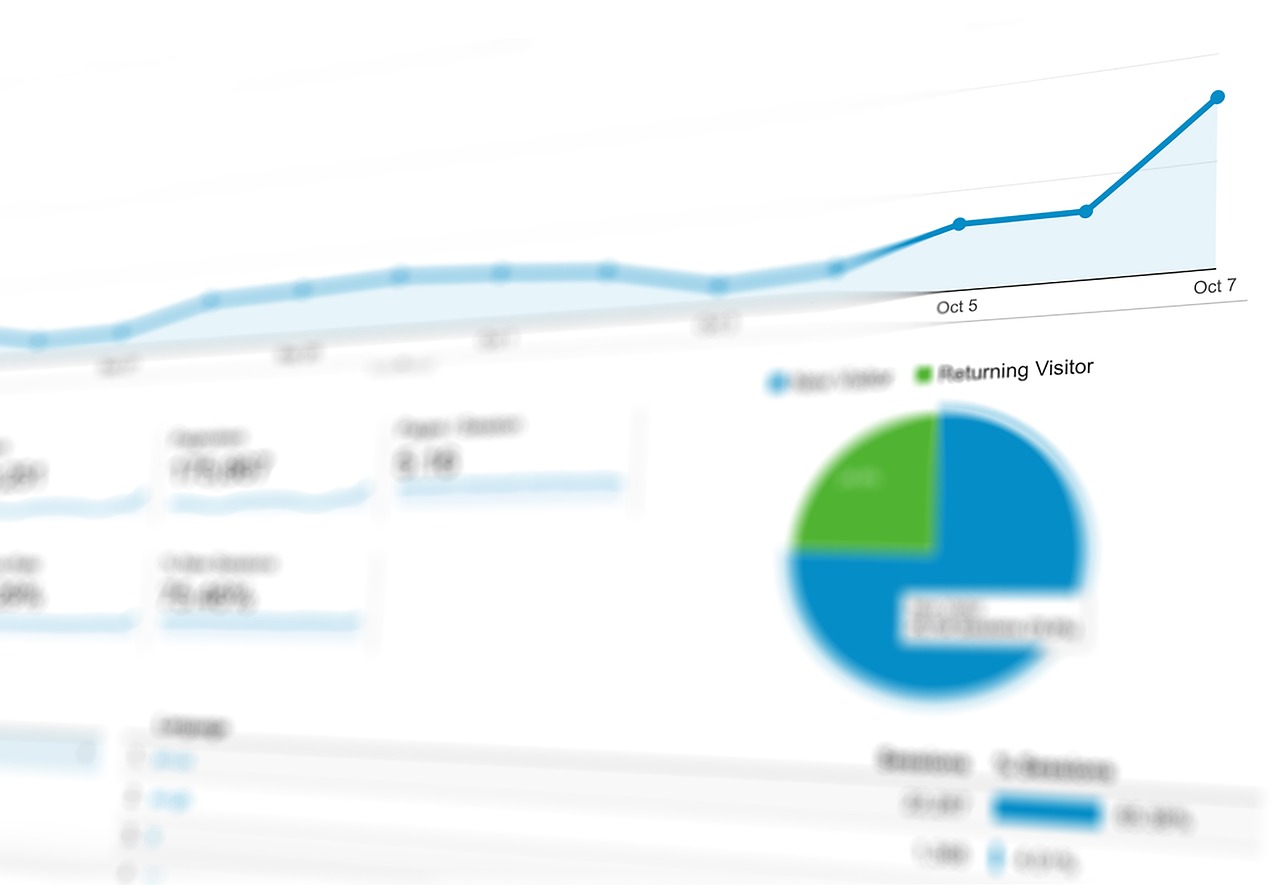In the dynamic realm of digital marketing, where technology and consumer behaviors intertwine endlessly, businesses face an ever-growing challenge of keeping up. The surge of artificial intelligence tools reshaping content creation, the rise of immersive shopping experiences powered by augmented reality, and the shift towards privacy-centric data use signal a new era in online marketing. Brands no longer just communicate—they foster relationships driven by authenticity, real-time engagement, and innovative platforms. Social commerce, blossoming into a standalone powerhouse, is blurring lines between browsing and buying, as influencer partnerships evolve to emphasize genuine storytelling rather than mere follower counts. Meanwhile, SEO strategies are moving beyond traditional keywords to embrace voice and visual search mechanisms shaping user intent today. As these trends unfold, companies leveraging leading platforms such as HubSpot, Salesforce, and Shopify, coupled with analytic insights from Google Analytics and Ahrefs, position themselves for remarkable growth and resilience. Understanding these transformative digital marketing avenues becomes essential for businesses aiming to thrive amid the complexity of 2025.
How Artificial Intelligence is Revolutionizing Digital Marketing Strategies
Artificial Intelligence (AI) continues to redefine the digital marketing landscape with astounding speed and depth. AI is no longer a futuristic concept but a core element for companies aiming to outperform competitors. From content generation to customer insights and marketing automation, AI-powered tools have become indispensable in driving campaigns that resonate personally with customers.
Consider how AI tools like ChatGPT, Jasper, and MidJourney streamline content creation. Marketers can now rapidly generate creative, engaging copy and visuals without sacrificing quality. For instance, HubSpot integrates AI features that assist in personalizing emails and social media posts, enhancing user engagement metrics without the manual labor traditionally involved.
Moreover, AI-driven data analytics platforms such as Google Analytics and Ahrefs offer deeper understanding of customer behavior, enabling marketing teams to segment audiences more effectively and predict future trends. Salesforce’s AI-driven CRM capabilities facilitate tailored messaging and seamless customer journeys, elevating conversion rates by delivering content relevant to individual preferences.
Another pivotal role of AI lies in automating repetitive tasks through platforms like Mailchimp and Hootsuite, liberating marketers to focus on strategy and creativity. Automation tools schedule posts, send targeted emails, and analyze campaign performance in real time. Buffer and Sprout Social harness AI to optimize posting times and suggest content adjustments based on audience engagement.
These capabilities drive efficiency and precision. For example, a Shopify-based e-commerce company using AI-powered chatbots on social media platforms can provide instant, personalized response to user inquiries while collecting valuable feedback data that fuels continuous improvement—similar to initiatives explored at customer feedback innovation studies.
| AI Application | Marketing Benefit | Example Platform |
|---|---|---|
| Content Generation | Faster, creative marketing collateral | Jasper, ChatGPT |
| Customer Segmentation | Personalized targeting & messaging | Salesforce AI CRM |
| Automation | Efficiency in campaign management | Mailchimp, Hootsuite |
In 2025, businesses that integrate AI deeply into their marketing frameworks will not only save costs but exceed customer expectations through tailored experiences. Laggards risk falling behind as consumer attention grows ever more fragmented and demanding. The drive towards hyper-personalization, powered by AI insights and automation, forms the cornerstone of effective, scalable digital marketing success.

Mastering Voice Search Optimization for Enhanced Visibility and Engagement
The advent of voice assistants like Siri, Alexa, and Google Assistant has transformed user search behavior profoundly. Voice search now accounts for a significant portion of queries, compelling marketers to rethink SEO strategies to accommodate conversational, natural language patterns rather than rigid keywords.
Businesses can boost their digital presence by optimizing for voice search through several key approaches. First, crafting content that directly answers common questions aligns perfectly with how users ask queries aloud. Brands such as Nykaa exemplify this by designing FAQs in natural language that cater seamlessly to voice search users.
Local businesses especially benefit since voice searches frequently focus on immediate needs, like finding nearby stores or services. Ensuring that local listings are accurate and enriched with metadata supports discoverability across voice platforms.
Images also play a crucial role in visual voice search tools like Google Lens, where optimizing alt text and metadata, as Flipkart has done, directly enhances searchability. These advances contribute to a well-rounded SEO approach embracing multiple new-user touchpoints.
Furthermore, adapting SEO content for voice search involves:
- Using long-tail, conversational keywords
- Creating structured data to help search engines understand context
- Optimizing for featured snippets and People Also Ask sections
- Focusing on mobile-friendly design and fast page load times
These adaptations prepare businesses for the prevalent zero-click search landscapes where Google anticipates user queries and delivers instant answers, often eliminating the need for user clicks. Maintaining visibility in these environments requires thoughtful content architecture and understanding user intent deeply.
Platforms like Canva and Shopify can facilitate creating engaging, voice-optimized content and storefronts that appeal intuitively to modern consumers. Meanwhile, marketers should monitor analytics tools such as Google Analytics for patterns in voice search traffic, refining strategies to remain agile.
| Voice Search SEO Element | Description | Business Impact |
|---|---|---|
| Conversational Content | Matches natural speech queries | Improves relevance & ranking in voice searches |
| Local SEO Optimization | Accurate listings & metadata | Drives foot traffic and local engagement |
| Featured Snippets Targeting | Concise answers for zero-click searches | Enhances brand visibility & authority |
Remaining aware of these voice-centric trends ensures brands don’t miss the opportunity to tap into an expanding market of voice-enabled device users. For detailed insights on adopting new business models aligned with evolving consumption habits, see effective subscription business models.
Why Authentic Influencer Marketing Will Dominate Brand Strategies
Influencer marketing continues to wield immense influence in shaping consumer choices, but the playbook of working with mega-celebrities purely based on follower numbers has shifted. In 2025, the emphasis is on authentic partnerships with micro-influencers and employee-generated content that resonates deeply with niche audiences.
This trend prioritizes genuine interactions. Brands like Zomato have successfully leveraged employee stories to build trust and humanize their message, moving beyond traditional ads. Instagram Reels and TikTok challenges now serve as powerful platforms for user-generated content (UGC), creating a sense of community and sparking viral engagement.
Employing incentives for active contributors, as Engine does with recipe contests, further galvanizes audience involvement and enriches brand storytelling. These tactics enhance social proof, signaling reliability and relatability more effectively than polished ads.
Key components of authentic influencer marketing include:
- Fostering long-term relationships with influencers aligned with brand values
- Engaging micro and nano-influencers who connect to loyal, highly interactive followers
- Integrating user and employee content alongside paid partnerships to diversify voices
- Utilizing storytelling approaches to communicate brand ethos deeply
Integrating UGC also strengthens social commerce capabilities by seamlessly blending product promotion with organic content. As social platforms increasingly allow shopping directly, influencer-driven content acts as a natural bridge to purchase actions.
Brands that master this approach will cultivate enduring communities and significantly enhance the impact of their marketing investments. For an exploration of how storytelling fuels business growth, visit strategies leveraging storytelling for brand success.

Integrating Augmented Reality and Interactive Content to Enhance Consumer Experience
Augmented Reality (AR) is making a transformative impact on digital shopping by offering immersive, interactive experiences. Rather than purely browsing products, consumers now “try on” items virtually or visualize furniture in their own homes before purchasing, reducing hesitation and returns.
Brands that embrace AR gain competitive advantages through increased engagement and higher conversion rates. For example, companies in beauty, fashion, and home goods sectors deploy AR filters on platforms like Instagram to enable real-time product trial. Lakmé’s AR makeup filters or Tata Motors’ VR test drives demonstrate this innovative trend.
Beyond AR, interactive content such as quizzes, polls, and personalized calculators elevate user engagement and extend time spent on websites. Dynamic content helps businesses gather valuable insights while entertaining and educating visitors simultaneously.
Here are practical ways businesses apply interactive and AR-based marketing:
- Developing virtual try-on experiences for apparel and accessories
- Integrating AR filters in social media stories for brand awareness
- Offering interactive product configurators on e-commerce sites
- Deploying gamified quizzes to recommend products or solutions
This combination not only attracts younger, tech-savvy audiences but also deepens emotional connections with brands. Tools like Canva enable marketers to rapidly create visually rich interactive content, while Shopify’s AR integrations streamline incorporating immersive experiences directly into online storefronts.
| Technology | Customer Benefit | Marketing Outcome |
|---|---|---|
| Augmented Reality | Try-before-you-buy product visualization | Higher conversion & lower returns |
| Interactive Content | User engagement & personalized experiences | Increased time on site & conversion |
Brands daring to embed these tools will meet consumer expectations for engagement and innovation, setting themselves apart in a crowded digital marketplace.
Privacy-First and Automation Trends: The New Norm in Digital Marketing
The landscape of digital marketing in 2025 is increasingly shaped by heightened privacy regulations and the rise of intelligent automation. Users demand transparency and control over their data, prompting brands to adopt privacy-first approaches that prioritize consent and ethical data usage.
Adopting these principles means building trust and loyalty—essential in a world where trust influences purchasing decisions significantly. Moving away from reliance on third-party cookies, marketers focus on first-party and zero-party data collection techniques to tailor experiences without compromising user privacy.
Simultaneously, automation technology powered by AI makes large-scale personalized marketing feasible. Platforms such as HubSpot, Mailchimp, and Marketo offer advanced segmentation and customized email workflows that adjust dynamically to consumer behavior.
Marketing automation benefits include:
- Streamlined communication through omnichannel approaches
- Reduced manual workload on marketing teams
- Improved lead nurturing with predictive analytics
- Consistent brand messaging across platforms like social media and email
Efficient use of these tools translates into superior engagement and conversion rates, enabling marketers to focus on strategic initiatives rather than repetitive tasks. Buffer and Sprout Social further enhance post scheduling and social listening, optimizing timing and content relevance.
Understanding and implementing these trends will determine which brands thrive by blending compliance with innovation. As consumers’ expectation for privacy grows, businesses ignoring this shift risk losing credibility and revenue streams.

Top 10 Digital Marketing Trends in 2025
Click a trend to learn more
Frequently Asked Questions About Digital Marketing Trends in 2025
What is the most critical digital marketing trend to focus on in 2025?
AI-powered marketing and automation stand as the most critical trends, enabling businesses to deliver personalized, scalable, and efficient campaigns.
How can small businesses benefit from voice search optimization?
By adopting conversational content and optimizing local SEO, small businesses can tap into voice search traffic to attract nearby customers effectively.
Why is influencer marketing shifting towards micro-influencers?
Micro-influencers provide authentic connections and higher engagement within niche communities, delivering better ROI compared to celebrity influencers.
How does augmented reality improve customer experience in e-commerce?
AR helps customers visualize products in real settings, reducing uncertainty and increasing confidence, which leads to higher conversion rates and lower returns.
What practices ensure privacy-first marketing compliance?
Utilizing first-party data, obtaining explicit consent, and maintaining transparent data usage policies are key for privacy-first marketing.


